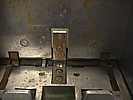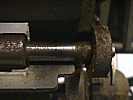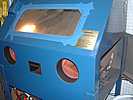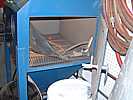|
If parts can be brought to my shop in the east San Jose foothills, I have additional options:
Blast cabinet cleaning - I have three grits available - glass beads, silicon carbide & walnut shells. beads at low velocity do not change the dimensions, but do remove surface grime and rust. silicon carbide is more aggressive. walnut shells are the lightest cleaning and if abrasive residues are left they break down rather than act as ongoing grinding compound. I also have a large outside sandblaster if large parts need refinishing.
I have two small ultrasonic cleaners, one large one, and a kerosene parts washer.
A full machine shop (lathes, mills, grinders, inspection stuff, etc.) if parts need such.
Regarding the 3M Scotch Brite pads, I advise caution with the maroon pads as they range in grade from coarse to very fine. The white and gray pads are a better starting choice as they are ultra fine and super fine. See mscdirect.com for the choices (use their search engine). Again, I advise against using any abrasive materials in situ.
I also suspect that the parts in the 1402 are not stainless steel (if they were they would not rust). Certainly the punches and punch blocks (dies) are tool steel. I think a more common manufacturing approach circa 1960 would be to hard chrome plate wear (feed rollers, throat blocks, etc.) or corrosion susceptible parts. Electroless nickel plating was also common. Another choice would be to use a chrome cleaner, but as Allison points out the rust conversion chemicals will need to be neutralized and thoroughly rinsed away. Clean deionized or distilled water ultrasonics are very good for the final final rinse. The 3M pads are a polymer material with abrasives bonded to them, I doubt if there are any residuals other than abrasive particles.
| 



